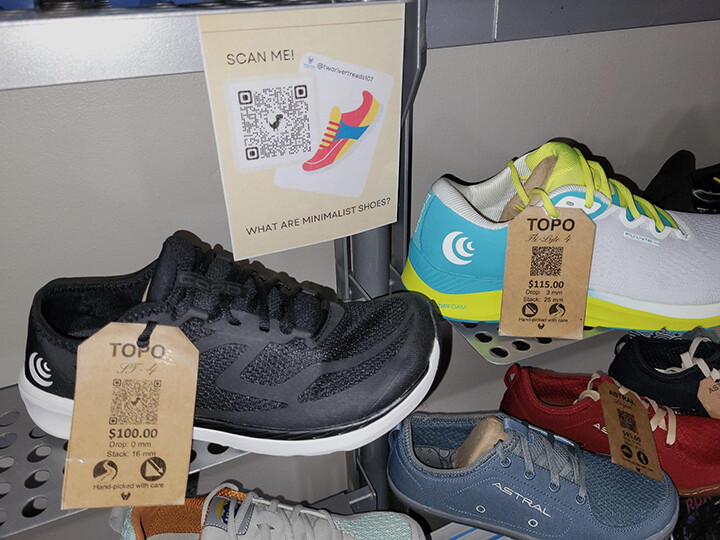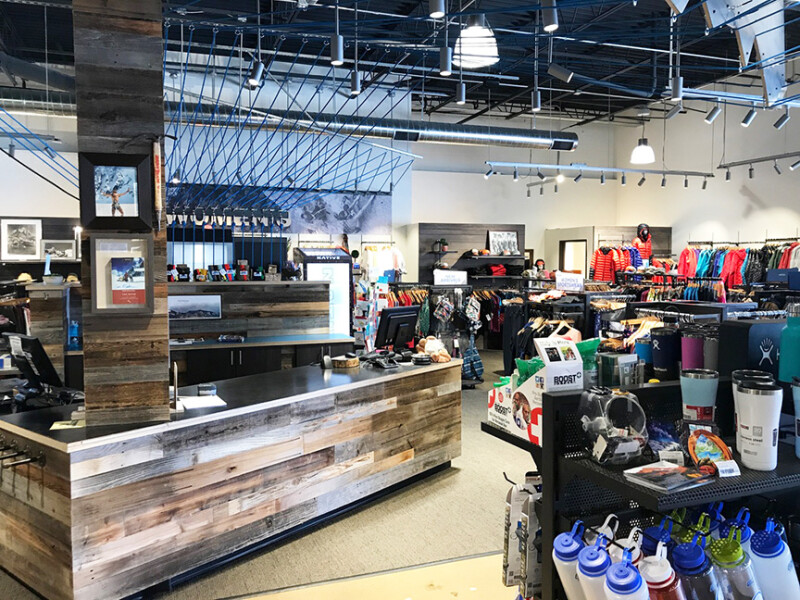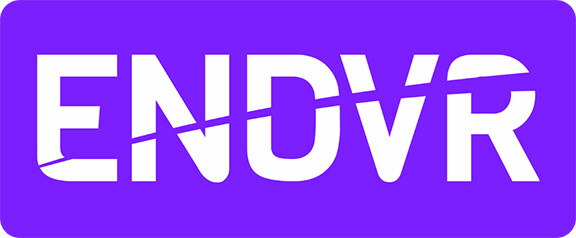With its enterprising use of QR codes, Two Rivers Treads is connecting its brick-and-mortar store to the digital world and arming its customers with easily accessible information to help them lead healthier, more active lives.
Noting the pandemic-era rise of QR codes, leadership at the West Virginia-based running store began exploring ways it could use the technology to share information on products, store activities, injuries and the like.
“We have so much information to share, but there’s only so much people can retain when we’re talking to them,” Two Rivers Treads manager Diana Gorham says. “Our thought was, ‘Let’s give them the tools to access helpful information, so it’s right there for them to review now or later.’”
QR codes – those matrix-styled barcodes now commonplace at restaurants, arenas, libraries, advertising and other venues – continue making that idea reality at Two Rivers Treads.
Employing QR Codes
Over the last two years, Two Rivers Treads has strategically – and increasingly – used QR codes around its store to deepen connections with customers, provide resources and drive knowledge.
Each model on the shoe wall, for instance, features a custom-made tag sharing the name of the shoe, its price, stack height and drop along with a QR code leading to the shoe’s presence on the Two Rivers Treads’ website. There, customers can read a description of the shoe and review other details of a particular model.
Near nutrition products from RxSugar sits a laminated sign with a QR code customers can scan to see recipes. And near the register, customers interested in discovering “3 Steps to Pain-Free Feet” can scan a QR code and be introduced to detailed information from Healthy Feet Alliance.
Other QR codes on signage around the store lead to Two Rivers Treads’ social media pages or videos of Dr. Mark Cucuzzella, a practicing physician and the store’s founder, describing minimalist footwear, barefoot science or common foot issues like plantar fasciitis or hammer toes.
“We want to make sure we’re making all the great information we can have as readily available as possible,” says Cucuzzella, author of Run for Your Life: How to Run, Walk and Move without Pain or Injury and Achieve a Sense of Well-Being and Joy.
Gorham says the QR codes also function as a staff training tool as well as a resource when associates need speedy information on a running shoe model, such as its weight or available sizes and colors.
Leveraging QR Codes In Stores
On the operations side, Gorham calls leveraging QR codes a relatively straightforward process. After creating a QR code – websites such as QRCode Monkey and QR Code Generator offer free code-producing tools retailers can use – Gorham imports the code over to Canva, a graphic design platform, and makes the product she wants, whether that’s a poster, a flyer or a shoe tag.
Run shops can use QR codes to link customers to virtually anything – a web page detailing the store’s coaching services, maps of local trails, a race registration page or the shop’s training run calendar. While stores can create and share their own content, they can also use content from brand partners, such as how-to videos.
“Once you know how to do this, you can use a QR code to share more information on anything customers might want to know about,” Gorham says.
For stores interested in using QR codes as a communication tool, Gorham suggests starting small. She recommends stores first consider the information and resources they have on hand already that would be most applicable to their customers. Thereafter, run shops can create QR codes linking to that content and develop a print product that invites customers to learn more by pulling out their smartphone and scanning the code.
“QR codes are great because they give people the option for knowledge, but don’t force feed it,” Gorham says.
_________
Five Ways To Get Your QR ON...
Promotion: Use QR codes to highlight your store’s products and services. A poster at spring track meets can direct people to online information about a youth summer camp, while a QR code on race shirts might lead to your training groups’ web page.
Consumer Education: Provide QR codes to drive customers to videos or written content detailing the best use of certain products, from recovery footwear and injury prevention tools to nutrition and hydration products. Explain how a product works or how to maximize its use.
Customer Feedback: QR codes on receipts can lead to customer surveys, which can offer insights on what your store’s doing well, where it might do better and how it is perceived by customers.
Sales: Use QR codes to drive people to your store’s website, where they can peruse available products, if not make a direct purchase. On race bibs, place a QR code alongside a discount on a store purchase.
Storytelling: Share compelling stories behind products and services. On a flyer announcing a couch to 5k program, use a QR code to show an inspirational highlight video of a recent graduating class. Or attach a product tag to store-branded merchandise that includes a QR code prompting a short video from ownership explaining the motivation to open the running store and its mission.







